My brother and his wife were eager to go on a road trip with us to someplace that we hadn’t yet visited. As we scrutinized a map, it seemed that there was one very obvious place that we hadn’t gotten to – Padua (It. Padova).
It was a beautiful, sunny morning as we boarded the 0920h train toward Venice, and after about an hour, we stepped off the train in Padua with no specific plan of action. It didn’t take us long to realize that by allocating only a day-trip to the city, we had bitten off more than we could chew. So, we decided to walk around the city center and just take it all in and pop into any place that pulled at us in and was open.
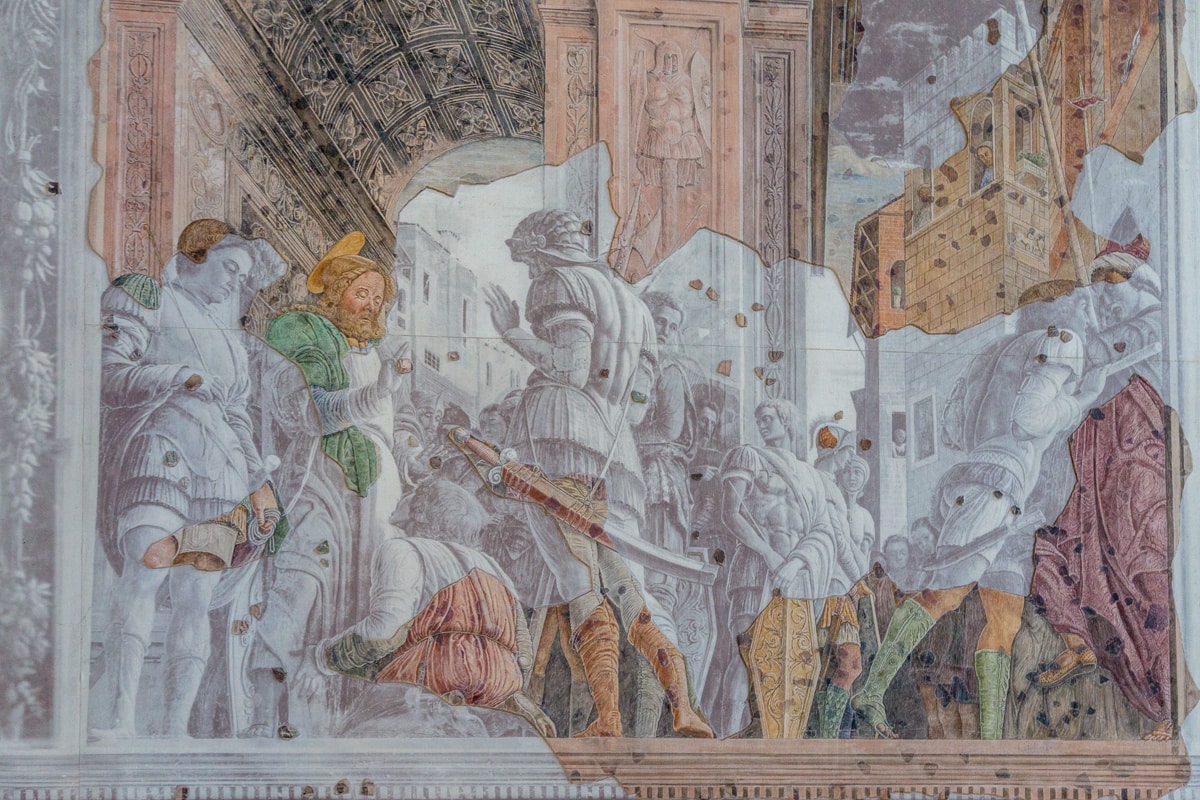 Making our way toward the city center, we stopped first at the Chiesa degli Eremitani, or Church of the Hermits, a 13th century Augustinian church. It was built in 1276 and dedicated to the saints Philip and James. It was here we learned of a 1944 Allied bombing raid that demolished the extraordinary 1448–57 frescoes by Andrea Mantegna, considered by some art historians to be Italy’s biggest wartime cultural loss, but after half a century of painstaking restoration, about 10% of the works have been pieced back together.
Making our way toward the city center, we stopped first at the Chiesa degli Eremitani, or Church of the Hermits, a 13th century Augustinian church. It was built in 1276 and dedicated to the saints Philip and James. It was here we learned of a 1944 Allied bombing raid that demolished the extraordinary 1448–57 frescoes by Andrea Mantegna, considered by some art historians to be Italy’s biggest wartime cultural loss, but after half a century of painstaking restoration, about 10% of the works have been pieced back together.
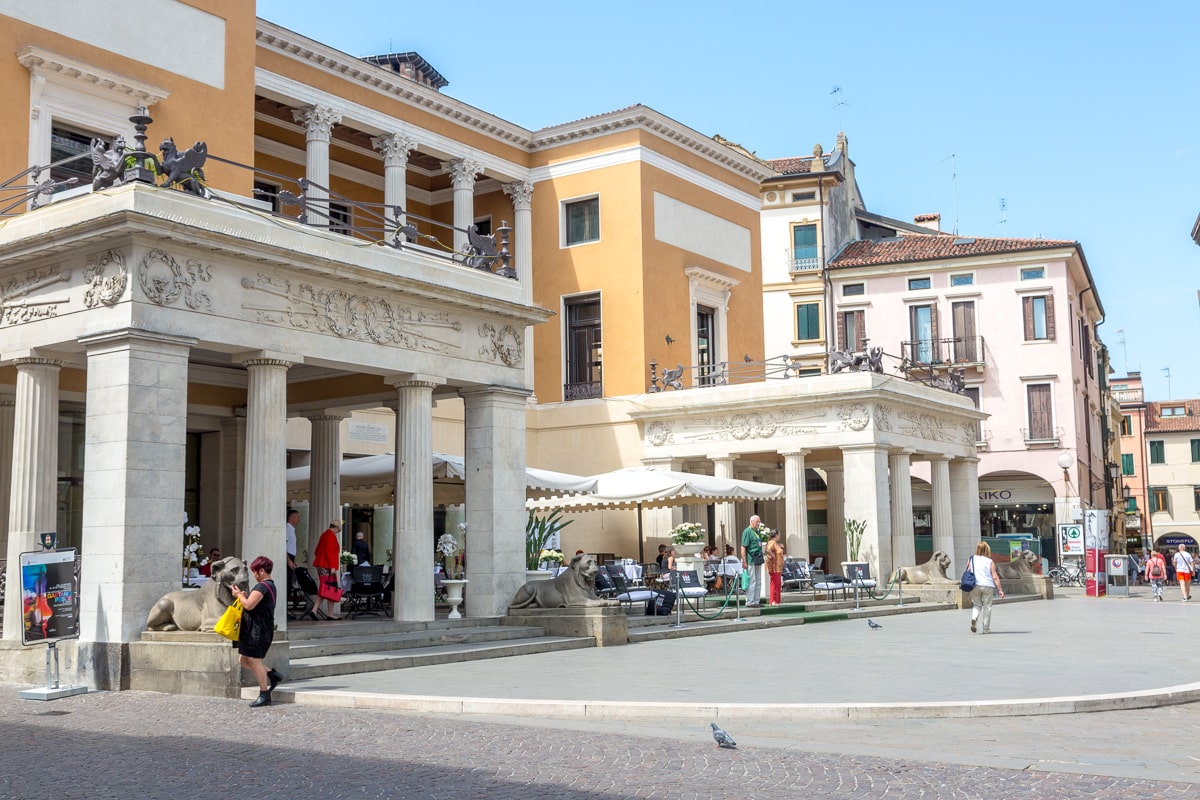 As we reached the city center, we were greeted by large bustling piazzas , grand buildings both ancient and modern, streets with vast porticoes, splendid churches, museums, shops, and many restaurants and cafes.
As we reached the city center, we were greeted by large bustling piazzas , grand buildings both ancient and modern, streets with vast porticoes, splendid churches, museums, shops, and many restaurants and cafes.
Two wonderful, large plazas, Piazza delle Erbe and Piazza dei Frutti, bound the Palazzo della Ragione (Ragione Palace) an impressive medieval, fresco-filled civic building with a ground floor, indoor food market. A bustling, outdoor market was being held on Piazza delle Erbe the day we were there, and the selection of fresh and colorful vegetables and fruits was beautiful.
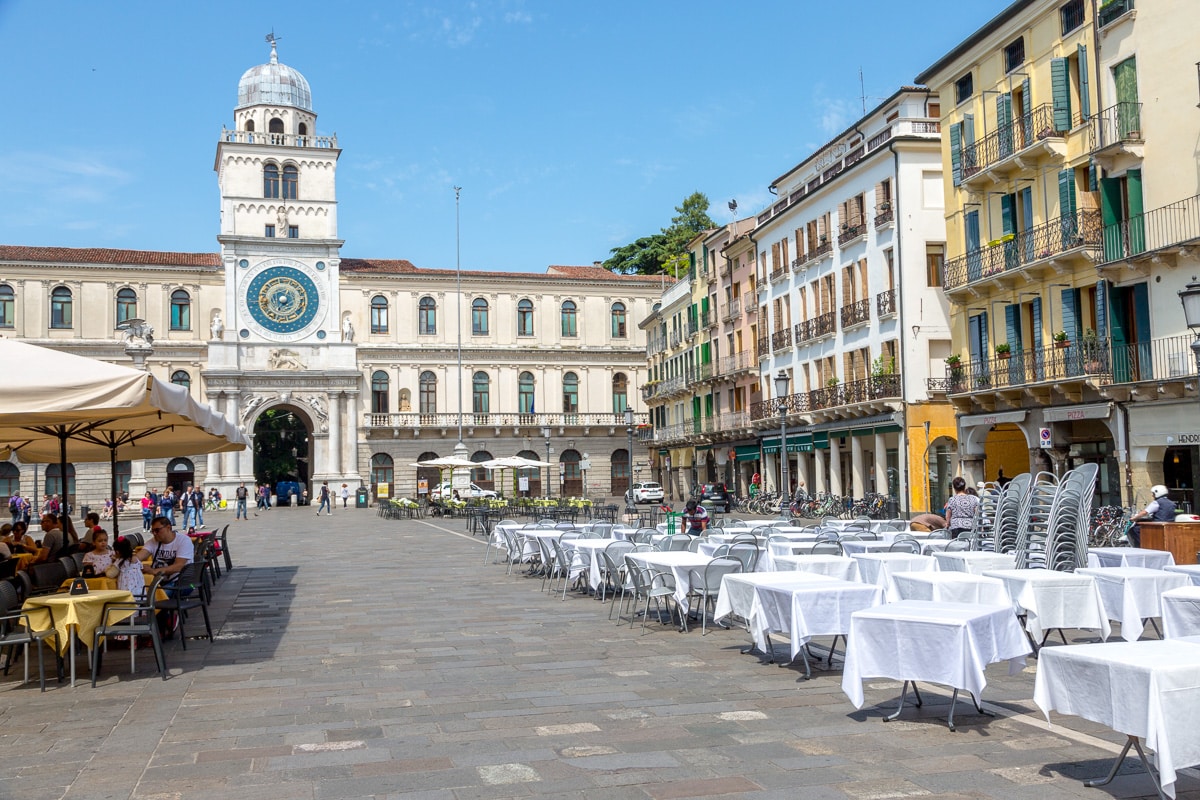 Not far away was the Piazza dei Signori, a picturesque 14th century public square built on the site of the “Palazzo della Signoria“. The square was suited to the meetings and walks of the nobles of the day, as well as courtship, concerts and festivals.
Not far away was the Piazza dei Signori, a picturesque 14th century public square built on the site of the “Palazzo della Signoria“. The square was suited to the meetings and walks of the nobles of the day, as well as courtship, concerts and festivals.
A landmark 15th century clock tower situated over a triumphal arch, beautifully dominates one end of the piazza. Its beautiful astronomical clock, originally built in 1344, was damaged by a fire and had to be replaced in 1436.
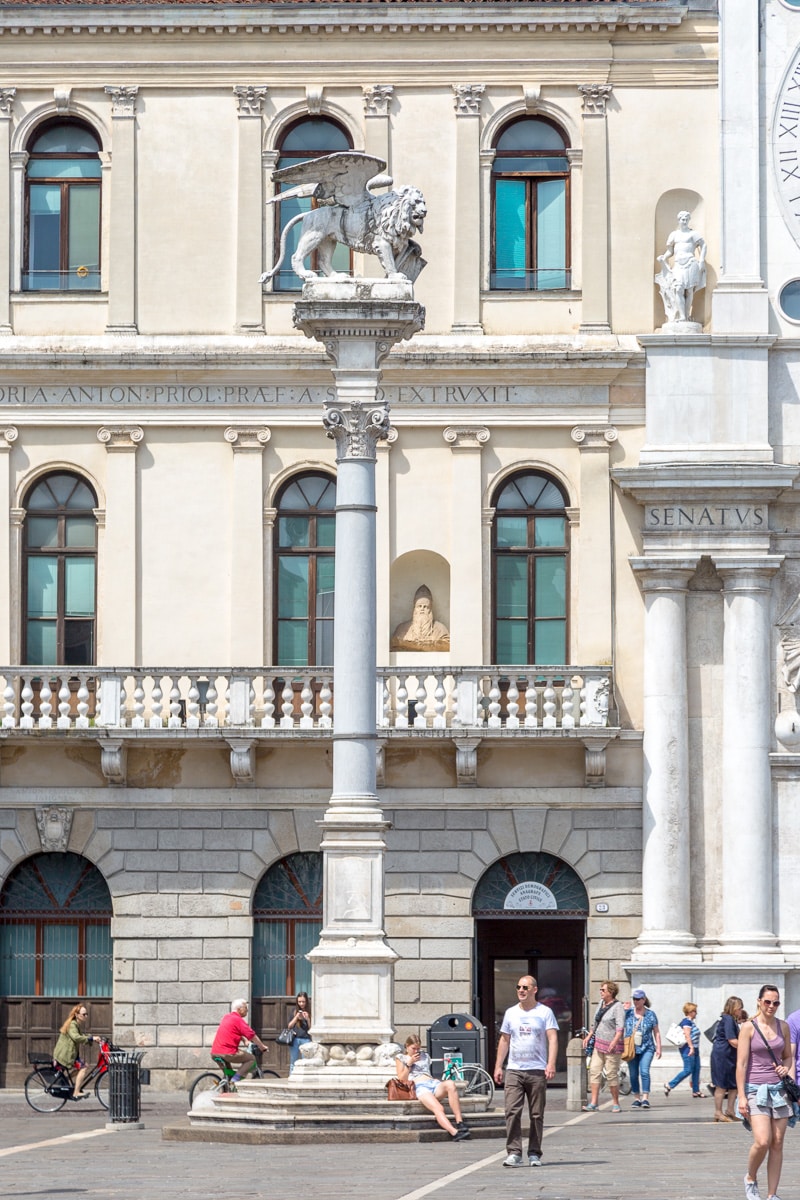 Obviously, Padua is an ancient town. It was founded between the 11th and 10th centuries BC, and claims to be the oldest city in northern Italy. During the northward expansion of the Roman Empire, Padua was gradually assimilated around the 3rd century BC. By the end of the 1st century BC, Padua seems to have been the wealthiest city in Italy outside of Rome.
Obviously, Padua is an ancient town. It was founded between the 11th and 10th centuries BC, and claims to be the oldest city in northern Italy. During the northward expansion of the Roman Empire, Padua was gradually assimilated around the 3rd century BC. By the end of the 1st century BC, Padua seems to have been the wealthiest city in Italy outside of Rome.
Being a wealthy city had its complications. During the ensuing centuries, Padua fell victim to the Huns, and then was savagely sacked by Attila in 450. Still later it fell under the control of the Gothic kings Odoacer and Theodoric the Great, then the Byzantine Empire, again seized by the Goths, then the Lombards, and so on, until at the beginning of the 11th century the citizens established a constitution.
Over the next century they were engaged in wars with Venice and Vicenza. But after 1256 Padua enjoyed a period of calm and prosperity. Padua then came under the rule of Venice in 1405, and mostly remained that way until the fall of the Republic of Venice in 1797.
 The University of Padua founded in 1222 was the second university in Italy, and is the world’s fifth-oldest surviving university. Today it has around 60,000 students who contribute a vitality and energy to the city.
The University of Padua founded in 1222 was the second university in Italy, and is the world’s fifth-oldest surviving university. Today it has around 60,000 students who contribute a vitality and energy to the city.
One of the most famous people associated with the University of Padua is Galileo Galilei (1564–1642). Physicist, mathematician, astronomer, and philosopher, father of modern science, Galileo came to Padua In 1592, where he taught geometry, mechanics, and astronomy until 1610. During this time he worked on a variety of experiments, including the speed at which different objects fall, mechanics and pendulums.
 It was while he was here that, in 1609, Galileo heard about the invention of the telescope in Holland. Having never seen an example, he constructed his own telescope and made many important astronomical discoveries. These included mountains and valleys of the moon, sunspots, the moons of planet Jupiter and the phases of the planet Venus.
It was while he was here that, in 1609, Galileo heard about the invention of the telescope in Holland. Having never seen an example, he constructed his own telescope and made many important astronomical discoveries. These included mountains and valleys of the moon, sunspots, the moons of planet Jupiter and the phases of the planet Venus.
As we wandered, we came across the Porta Ponte Molino, a gated tower in the city walls with a plaque stating, “ Da questa torre GALILEO molta via de cieli svelo” (From this tower Galileo found many streets in the sky)’. It is said that that it was from this tower that, with his telescope, Galileo first saw the four moons of Saturn.
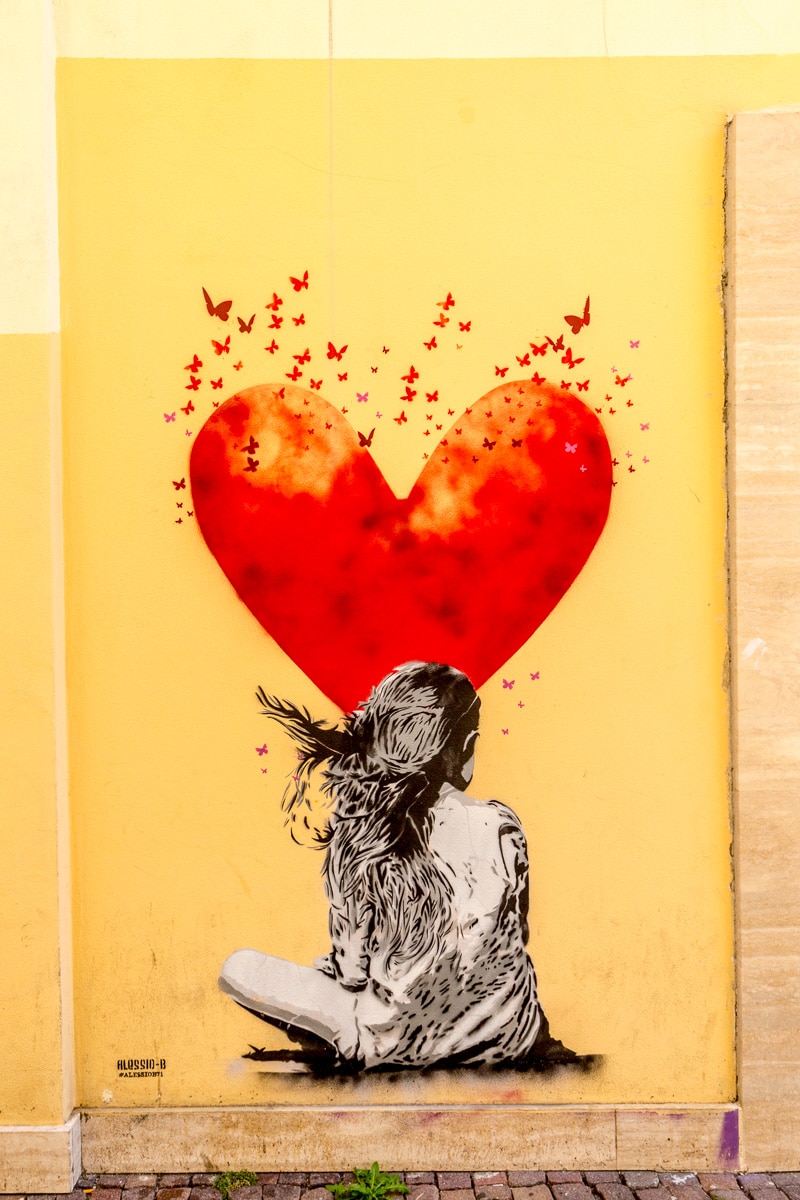 It was at some point during our explorations that we located a small, very off-the-beaten-path, restaurant – A Banda Del Buso. Kathy (my brother’s wife) had chosen it during her research, and it turned out to be a most excellent choice. Slightly difficult to find, and if you didn’t know it was there, it could have been easily missed. But we were all glad we didn’t miss it, as we had an incredible lunch and lively conversations with the two guys running the place.
It was at some point during our explorations that we located a small, very off-the-beaten-path, restaurant – A Banda Del Buso. Kathy (my brother’s wife) had chosen it during her research, and it turned out to be a most excellent choice. Slightly difficult to find, and if you didn’t know it was there, it could have been easily missed. But we were all glad we didn’t miss it, as we had an incredible lunch and lively conversations with the two guys running the place.
We were able to visit several other places during our afternoon in Padua, especially impressive was the 12th century Battistero del Duomo or Padua Baptistery next to the cathedral. The exterior gives no clue to the splendor of the interior. There you can find one of the most important fresco cycles of the 14th century, a series of masterpieces by Giusto de Menabuoi.
 The relatively small space is filled with scenes from the Old and New Testament, and the partial restorations of the 20th century provide a glimpse of the vivid colors that the frescoes must have originally displayed. It is a stunning place to visit, and it would be a great place for binoculars.
The relatively small space is filled with scenes from the Old and New Testament, and the partial restorations of the 20th century provide a glimpse of the vivid colors that the frescoes must have originally displayed. It is a stunning place to visit, and it would be a great place for binoculars.
It had been a full day, and even though there was still much to see in this historic and interesting town, it was time to go. We wandered toward the bus stop through more medieval streets, past the historic Synagogue, built in 1584, and then on to the train station via a bus.
We still had enough time for some cool drinks near the station before we took the train back to Verona. The day had been good, but Padua really deserved more time.
Perhaps another day … someday.

Neona Daugherty
27 Jun 2018It sounds like a wonderful day in Padua. Loved the pictures.
Cathi
27 Jun 2018Fabulous Family Holiday.
Jeannie
28 Jun 2018It has been great to have them join us each year. Always fun times.
Monique Charreaux
27 Jun 2018Dear Chris and Jeannie,
We met briefly in the Parc de la Tête d’Or in Lyon last June
You have now 13 new friends (retirees) delighted to follow you in Italy (our favorite destination), ready to go anywhere… «Let’s read something from Chris and Jeannie, they are still in Italy.. »
We enjoy meeting at my home to learn English, we get to know each other, have become friends, our group is open, free (we belong to an association of retirees), why don’t you come and join us some time (we have a guest room)?
By the way Christian and I will be hiking in the Dolomites (not so far from Bolzano) beginning of August, but you may be in Slovenia…
All the best,
Monique
Jeannie
28 Jun 2018We remember you fondly and wish we had met you at the beginning of our time in Lyon rather than the end. Hearing from you on our blog is a good way to stay connected so your comments are always enjoyed. And that we have additional followers means that our circle of friends continues to expand. Hello to our new subscribers from Lyon!
We almost planned to hike in the Dolomites, but spent a week hiking in Slovenia instead. Hopefully soon, Chris will be writing about our time there. We are currently in Dubrovnik, Croatia, another great place to visit, and will begin our travel back to Florida on Friday (tomorrow).
Thank you again for reaching out to contact us. It is wonderful to be drawn back to those places that have been so special to us and to the people that made them so.
Warmest regards,
Jeannie & Chris
Linda
27 Jun 2018Great pictures and thanks for sharing the city’s history.
Linda Link pina
27 Jun 2018Thank you so much for your amazing photographs —and the accompanying text. Wonderful !
Missy Ortega
27 Jun 2018I love the frescoes and the fact that some were restored, even if it was 10%. Very nicely written. Thank you for sharing your adventure.
Missy Ortega
27 Jun 2018I love the frescoes and the fact that some were restored, even if it was 10%. Very nicely written. Thank you for sharing your adventure.
Alice Mathias
27 Jun 2018I’m getting so smart; thanks to you!
Debi Katzman
26 Jun 2018Wonderful street art!
Jeannie
28 Jun 2018We find it in most places we travel, some more creative than others. Always a visual surprise!